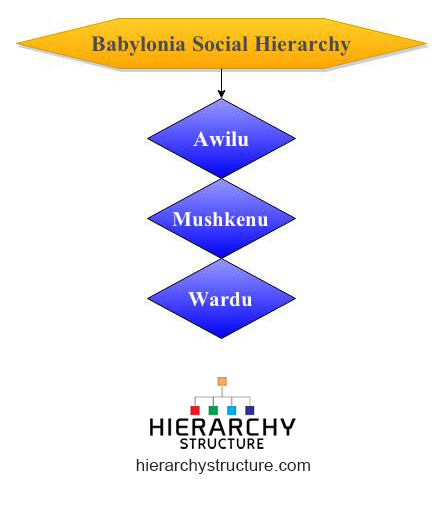Babylonia was a prehistoric empire that was situated in the southern Mesopotamia flanked by the Tigris and the Euphrates Rivers. As per history, under the rule of King Nebuchadnezzar II, the Babylonians destroyed the capital city of Judah kingdom, the Jerusalem and kept God’s promised people into incarceration in BC 587.
The traditional Sumerian culture was the basis of Babylonian civilization. The Babylonian culture was rich with arts and literature depictions and they also had organised law system in place. In the historical writings it is recorded that there were diverse class divisions in the social hierarchy of ancient Babylonia.
 Given below are the various classes in the Babylonian social hierarchy:
Given below are the various classes in the Babylonian social hierarchy:
Different Levels in the Hierarchy
The king was at the top most position in the social hierarchy and the slaves were at the lower end. After the king, there were aristocrats, the free citizens and the service men in armed and public services. Although the class arrangement was unyielding, there were few possibilities of movement from one level to the other in social structure was existing.
For example the slave who has debts had the option of paying back his obligations to gain his freedom, whereas a foreign captive never had any option of freedom.
There were three main classes of the Babylonian society:
Awilu
As recorded in the historical renditions, the Awilu was the top most class in the social hierarchy of ancient Babylonia. According to these records, the bodies of Awilu class people were considered precious in Hammurabi’s Code and they were richer than the other two majorclasses in the society. An Awilu was a free person who belonged to the affluent and wealthy upper class and enjoyed grants and benefits.
Mushkenu
The Mushkenu came after the Awilu in the social class structure of Babylonia. Although a Mushkenu was a free man, he did not enjoy the same rights that of an Awilu. Basically the Mushkenu were free people of low esteem and they could be abridged to slavery as a punishment for some crime committed by them. The parents might even trade their children as slaves in time of need.
Wardu
The Wardu or slaves were at the bottom end of the social hierarchy structure of Babylonia. Most of the people from this class were convicts of war, while some were recruited from the innate Babylonians as well. Among the Mushkenu, a man could sell his family members as slaves in order to pay back his debts.
